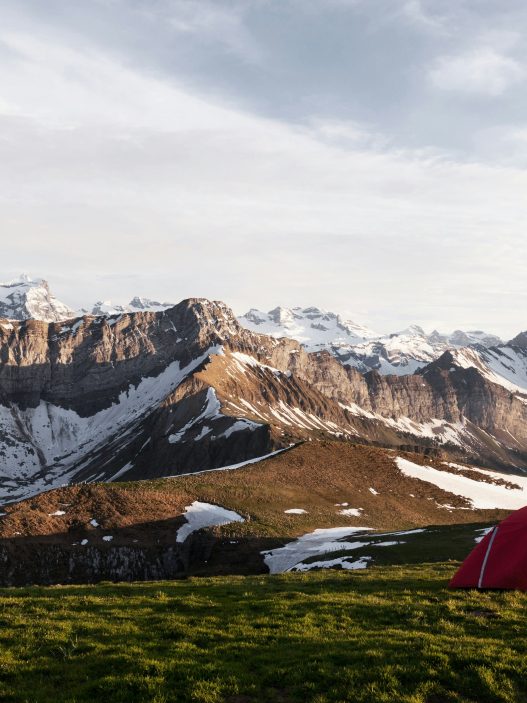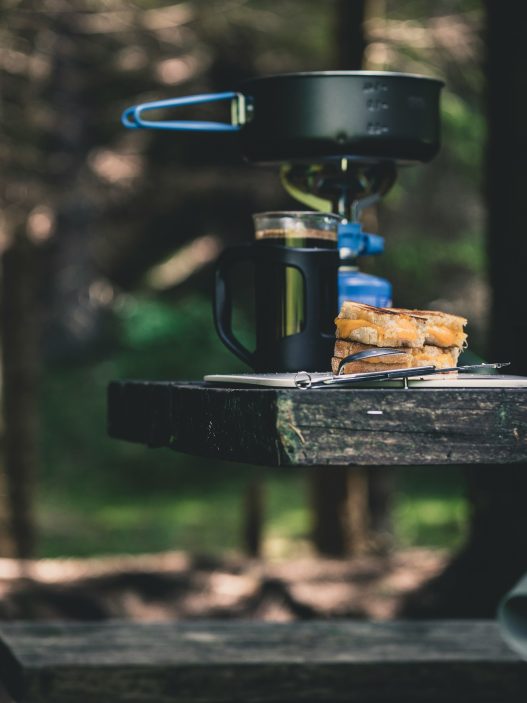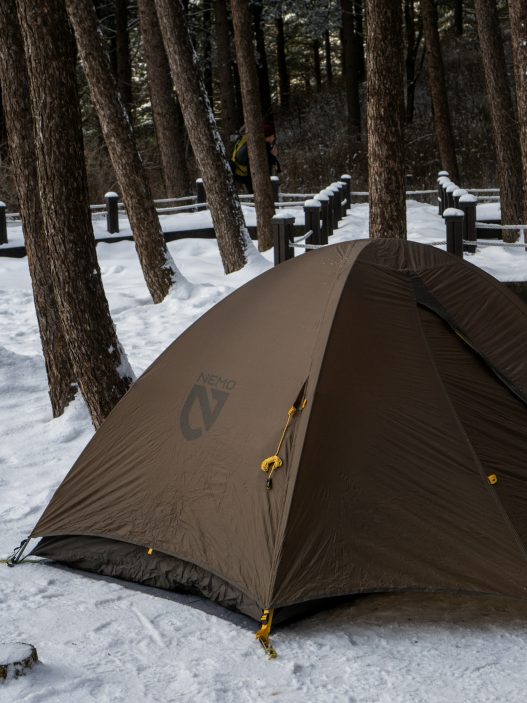Moving from urban pavements to wilderness trails requires careful preparation and a fundamental shift in mindset. The key to a successful first backpacking experience lies in understanding how mountain environments differ from city life and preparing accordingly through proper gear selection, physical conditioning, and skill development.
Many urban dwellers underestimate the challenges of mountain hiking, from navigation without street signs to managing limited resources far from shops and services. The transition involves learning to carry everything needed for survival on one’s back whilst adapting to unpredictable weather and terrain conditions.
This comprehensive guide covers destination selection, essential equipment choices, and practical preparation strategies that transform nervous beginners into confident mountain explorers. Readers will discover how to build outdoor skills gradually, adapt to high-altitude environments, and develop the self-reliance necessary for safe wilderness travel.
Understanding the Transition from City to Mountain
The shift from urban environments to mountain wilderness involves fundamental changes in navigation, physical demands, and environmental conditions. First-time backpackers must recalibrate their expectations about comfort, convenience, and personal limits whilst preparing for unique challenges that wilderness travel presents.
Key Differences Between Urban and Wilderness Travel
Urban travel relies on established infrastructure, predictable surfaces, and immediate access to services. City streets offer consistent lighting, clear signage, and emergency services within minutes.
Mountain environments eliminate these conveniences entirely. Trails disappear in fog or snow. Weather changes rapidly without warning systems.
Navigation methods differ dramatically:
- Cities use street addresses and GPS with mobile coverage
- Mountains require map and compass skills with backup navigation
- Trail markers may be sparse or damaged by weather
Physical demands increase substantially in wilderness settings. Urban walking occurs on flat, paved surfaces with regular rest opportunities. Mountain terrain includes steep ascents, loose rocks, and uneven ground that taxes different muscle groups.
Surface conditions vary significantly:
- Pavement provides consistent, stable footing
- Mountain trails feature roots, rocks, mud, and stream crossings
- Weather creates ice, snow, or slippery conditions
Weight becomes a critical factor during backpacking. City travellers carry minimal gear and purchase necessities along the route. Backpackers must carry water, food, shelter, and safety equipment for multiple days.
Adjusting Expectations for the Outdoors
Comfort levels in wilderness environments differ substantially from urban standards. Cities provide climate-controlled spaces, comfortable seating, and indoor facilities at regular intervals.
Mountain conditions expose backpackers to temperature extremes, precipitation, and wind. Sleeping occurs on hard ground in confined spaces. Privacy becomes limited when sharing campsites with others.
Convenience factors change completely:
- No shops, restaurants, or immediate supply access
- Water sources require filtration or purification
- Waste disposal follows Leave No Trace principles
Timing expectations must shift from urban schedules to natural rhythms. City travel allows flexible departure times with consistent travel speeds. Mountain travel depends on daylight hours, weather conditions, and physical capabilities.
Early morning starts become necessary to reach destinations before afternoon weather changes. Rest stops occur when terrain allows rather than at predetermined intervals.
Distance calculations differ:
- Urban: 1 mile = 15-20 minutes walking
- Mountains: 1 mile = 30-60 minutes depending on elevation gain
Communication limitations create isolation from emergency services. Mobile phone coverage disappears in remote areas. Help may be hours or days away rather than minutes.
Common Challenges for First-Time Backpackers
Overestimating physical capabilities represents the most frequent mistake among beginners. City dwellers often misjudge the energy required for sustained uphill travel whilst carrying weight.
Physical challenges include:
- Muscle fatigue in legs, feet, and back
- Altitude effects above 2,400 metres
- Dehydration from increased exertion
Underestimating weather severity leads to dangerous situations. Mountain weather changes rapidly and creates conditions impossible in urban environments. Temperature drops occur suddenly with elevation gain or storm systems.
First-time backpackers frequently pack inappropriate gear. They bring cotton clothing that loses insulation when wet. They carry excessive unnecessary items whilst forgetting essential safety equipment.
Gear mistakes involve:
- Inadequate rain protection
- Insufficient warm layers
- Poor-fitting boots causing blisters
Navigation errors increase when relying solely on technology. GPS devices fail in challenging conditions. Battery power becomes limited without charging access.
Map reading skills become essential when electronic navigation fails. Compass use requires practice before wilderness travel. Weather can obscure landmarks and trail markers for hours.
Sleep disruption affects judgement and physical performance. Ground sleeping creates discomfort for those accustomed to mattresses. Temperature regulation becomes difficult without proper sleeping systems.
Choosing Your First Backpacking Destination
Selecting the right trail involves evaluating difficulty levels, understanding seasonal weather patterns, and securing necessary permits well in advance.
Assessing Trail Difficulty and Length
Beginners should target trails between 8-15 kilometres for day hikes or 20-30 kilometres for overnight trips. These distances allow new backpackers to gauge their fitness levels without overcommitting.
Trail grading systems vary by region:
- Grade 1-2: Well-maintained paths with minimal elevation gain
- Grade 3: Moderate terrain with some steep sections
- Grade 4-5: Challenging routes requiring experience
Elevation gain matters more than distance for difficulty. Trails with less than 300 metres of elevation gain per day suit beginners best. Steep ascents of 500+ metres can exhaust inexperienced hikers quickly.
Research trail conditions through official park websites and recent hiker reviews. Weather can dramatically alter trail difficulty, turning easy paths into treacherous terrain.
Seasonal Considerations for Beginners
Spring offers mild temperatures but potentially muddy trails and unpredictable weather. Summer provides the most stable conditions but brings crowds and higher temperatures.
Optimal seasons by region:
- Scotland Highlands: May-September
- Lake District: April-October
- Welsh valleys: March-November
Winter backpacking requires advanced skills and specialised equipment. New backpackers should avoid winter conditions entirely until gaining substantial experience.
Check historical weather data for your chosen destination. Temperature swings of 10-15°C between day and night are common in mountainous areas.
Researching Local Regulations and Permits
Many popular backpacking areas require advance permits, especially during peak season. Permits for places like Snowdonia camping spots can book up months ahead.
Essential research includes:
- Camping restrictions and designated sites
- Fire regulations and stove requirements
- Wildlife protection measures
- Group size limitations
Contact local park authorities directly for current regulations. Rules change frequently, particularly regarding environmental protection.
Some areas operate permit systems with daily quotas. The Pennine Way requires no permits, whilst certain sections of the South West Coast Path have seasonal restrictions.
Book permits immediately after they become available. Popular destinations like Ben Nevis routes fill quickly during summer months.
Essential Gear for Beginners
Proper gear selection prevents discomfort and safety issues whilst keeping pack weight manageable. Focus on the “big four” items: backpack, shelter, sleep system, and clothing layers that adapt to changing mountain conditions.
Backpacks and Packing Tips
A 40-60 litre backpack suits most weekend trips for beginners. Look for adjustable torso length, padded hip belt, and multiple compartments for organisation.
The hip belt should carry 80% of the pack’s weight on the hips, not the shoulders. Adjust the torso length so the belt sits on the hip bones.
Packing priority by weight:
- Heavy items (food, water, stove) go close to the back
- Medium items (clothes, first aid) fill remaining space
- Light items (sleeping bag, extra clothing) go at the bottom
Keep frequently used items in side pockets or top lid. Rain gear and snacks should be easily accessible.
Pack weight should not exceed 20% of body weight for beginners. A 70kg person should carry maximum 14kg including water and food.
Clothing for Variable Mountain Weather
Layer systems adapt to temperature changes more effectively than single heavy garments. Three layers provide flexibility: base layer, insulating layer, and waterproof shell.
Base layer: Merino wool or synthetic materials wick moisture away from skin. Avoid cotton as it retains moisture and loses insulation when wet.
Insulating layer: Down or synthetic insulation provides warmth. Down offers better warmth-to-weight ratio but loses effectiveness when wet.
Shell layer: Waterproof breathable jacket and trousers protect against wind and rain. Look for taped seams and adjustable hoods.
Pack extra socks, underwear, and warm hat. Waterproof gloves prevent hypothermia in wet conditions. Lightweight hiking trousers dry faster than heavy materials.
Sleep Systems and Shelter Options
A sleep system includes sleeping bag, sleeping pad, and pillow. These three components work together to maintain body temperature overnight.
Sleeping bags: Choose temperature rating 5-10°C below expected overnight lows. Synthetic fill performs better when wet, whilst down compresses smaller.
Sleeping pads: Provide insulation from cold ground and cushioning. R-value indicates insulation effectiveness – aim for R-3.5 minimum for three-season camping.
Shelter options: Two-person tents offer extra space for gear storage. Look for freestanding designs that don’t require guy-lines for basic setup.
Weight matters for backpacking. Lightweight tents typically weigh 1-2kg for two-person capacity. Check packed size fits in backpack.
Navigation and Safety Equipment
Map and compass remain essential even with GPS devices. Batteries fail, but paper maps work in all conditions.
Navigation basics: Ordnance Survey maps at 1:25,000 scale show detailed terrain features. Silva or Suunto compasses provide reliable direction finding.
Safety equipment: Whistle for emergency signalling, headtorch with spare batteries, first aid kit, and emergency shelter or bivvy bag.
Additional items: Multi-tool, duct tape for repairs, water purification tablets, and emergency food rations extend safety margins.
Mobile phone with offline maps provides backup navigation. Inform someone of planned route and expected return time before departing.
Planning and Preparation Strategies
Successful backpacking requires building cardiovascular endurance months before departure, calculating accurate daily distances based on terrain difficulty, and allocating proper funds for gear purchases and trail expenses.
Physical Conditioning and Training
Beginners should start conditioning 8-12 weeks before their trip. Cardiovascular fitness forms the foundation of backpacking endurance.
Start with 30-minute walks three times weekly. Gradually increase to 45-minute sessions with a loaded rucksack weighing 10-15% of body weight.
Hiking-specific exercises include:
- Stair climbing with weight
- Calf raises for ankle stability
- Squats for leg strength
- Core planks for balance
Practice walking on uneven terrain at local parks or nature reserves. Weekend day hikes build stamina whilst testing gear combinations.
Focus on foot conditioning by wearing hiking boots during training walks. This prevents blisters and identifies pressure points before the actual trip.
Creating a Realistic Itinerary
New backpackers should plan 8-12 kilometres daily on moderate terrain. Difficulty factors significantly impact distance calculations.
Terrain considerations:
- Flat trails: 3-4 km/hour
- Rolling hills: 2-3 km/hour
- Steep ascents: 1-2 km/hour
- Rocky/technical sections: 1 km/hour
Research water sources, camping spots, and emergency exits along chosen routes. Download offline maps and GPS coordinates for backup navigation.
Weather patterns affect trail conditions seasonally. Check historical data for temperature ranges, precipitation, and daylight hours during planned travel dates.
Plan rest days for longer trips. Factor in afternoon stops for meal preparation and camp setup before darkness.
Budgeting for Your First Trip
Initial gear investment ranges £300-800 depending on quality preferences. Essential purchases include shelter, sleeping system, rucksack, and cooking equipment.
Estimated costs:
- Tent: £80-250
- Sleeping bag: £60-200
- Rucksack: £100-300
- Cooking system: £40-120
- Clothing layers: £150-400
Ongoing expenses include food, permits, transport, and accommodation. Budget £15-25 daily for meals and snacks.
Research permit requirements early. Popular trails require advance booking with fees ranging £10-50 per person.
Consider money-saving strategies like borrowing gear initially, choosing free camping areas, and preparing homemade dehydrated meals instead of purchasing commercial alternatives.
Nutrition and Hydration in the Mountains
Mountain environments demand careful attention to caloric intake, water consumption, and nutrient timing. Proper meal planning, reliable water purification methods, and strategic energy supplementation form the foundation of successful backpacking nutrition.
Meal Planning for Backpackers
Backpackers require 2,500-4,000 calories daily depending on terrain difficulty, pack weight, and weather conditions. Cold temperatures and altitude increase caloric needs by 10-15% compared to sea level hiking.
Breakfast options should provide sustained energy through complex carbohydrates. Porridge with nuts, dried fruits, and honey delivers approximately 400-500 calories per serving. Instant oatmeal packets offer convenience but contain less protein and fibre.
Lunch foods must be lightweight and require no cooking. Tortillas with peanut butter, cheese, and dried meat provide 600-700 calories. Energy bars, nuts, and dried fruits supplement midday meals effectively.
Dinner preparations should focus on hot, substantial meals. Dehydrated pasta dishes, rice with protein powder, and instant soups restore energy reserves. A typical mountain dinner should contain 800-1,000 calories.
Pack weight considerations limit fresh foods to the first day. Dehydrated and freeze-dried options weigh 80% less than fresh equivalents whilst maintaining nutritional value.
Managing Water Sources and Purification
Mountain water sources include streams, lakes, springs, and snowmelt. Even pristine-looking water may contain Giardia, Cryptosporidium, or bacterial contaminants that cause severe illness.
Water purification tablets containing chlorine dioxide treat 1-2 litres in 30 minutes. These tablets remain effective at freezing temperatures and have 4-year shelf lives. Taste improves with flavouring drops added after treatment.
Portable water filters remove bacteria and protozoa but not viruses. Pump filters process 1 litre per minute and handle turbid water effectively. Gravity filters work hands-free but require 10-15 minutes per litre.
Boiling water kills all pathogens when maintained at rolling boil for 1 minute at sea level, 3 minutes above 2,000 metres. This method consumes significant fuel but provides absolute reliability.
Carry 2-3 litres minimum in cold conditions where dehydration occurs rapidly. Insulated bottles prevent freezing, whilst wide-mouth designs accommodate purification tablets easily.
Energy Snacks and Supplements
Strategic snacking maintains blood sugar levels and prevents energy crashes during long hiking days. Consume 100-200 calories hourly through small, frequent portions rather than large meals.
Trail mix combinations balance quick sugars with sustained proteins and fats. Nuts, dried fruits, dark chocolate, and seeds provide essential minerals lost through perspiration. Avoid mixes containing yogurt coatings that melt in warm conditions.
Electrolyte replacement becomes critical above 1,500 metres where respiration increases significantly. Powder sachets containing sodium, potassium, and magnesium prevent cramping and maintain hydration efficiency.
Caffeine supplements through tea, coffee, or energy gels enhance alertness during challenging terrain. Limit intake to 400mg daily to avoid dependency and sleep disruption at altitude.
Pre-packaged energy bars offer convenience but often contain excessive sugars. Homemade alternatives using dates, nuts, and protein powder provide superior nutritional profiles for mountain activities.
Building Outdoor Skills and Confidence
Successful backpacking requires mastering three fundamental skills: navigating with map and compass, handling medical emergencies, and protecting natural environments. These abilities form the foundation for safe wilderness travel.
Basic Map Reading and Compass Use
Digital devices fail in remote areas, making traditional navigation essential. Topographic maps show terrain features through contour lines, which connect points of equal elevation.
Essential map elements include:
- Scale (typically 1:25,000 or 1:50,000)
- Contour lines and elevation markers
- Grid references for precise location
- Symbols for paths, water sources, and landmarks
A baseplate compass provides reliable direction finding. The magnetic needle points to magnetic north, not true north. Declination adjustment corrects this difference.
Basic compass technique:
- Hold compass flat at chest level
- Turn dial until north aligns with needle
- Follow direction of travel arrow
Practice triangulation to determine position. Take bearings to two visible landmarks, then plot back-bearings on the map. The intersection reveals current location.
Start with familiar terrain before attempting challenging navigation. Local orienteering clubs offer structured courses for developing these skills.
First Aid Essentials
Wilderness injuries require immediate response when professional help is hours away. Basic first aid knowledge prevents minor problems from becoming emergencies.
Priority treatment order:
- Severe bleeding
- Breathing difficulties
- Shock and hypothermia
- Fractures and sprains
Carry a comprehensive first aid kit including bandages, antiseptic, pain relief, and emergency shelter. Blister treatment deserves special attention during backpacking trips.
Common wilderness injuries:
- Cuts and scrapes: Clean thoroughly, apply antiseptic, dress wound
- Sprains: Rest, ice, compression, elevation
- Hypothermia: Insulate casualty, provide warm drinks, seek shelter
Learn to recognise signs of serious conditions like concussion or severe allergic reactions. Consider wilderness first aid certification before tackling remote areas.
Practice scenarios at home using your actual kit. Familiarity with equipment reduces panic during real emergencies.
Leave No Trace Principles
Responsible outdoor recreation protects wilderness for future generations. Seven core principles guide ethical behaviour in natural environments.
The seven principles:
- Plan ahead and prepare – Research regulations and weather
- Travel on durable surfaces – Stick to established trails
- Dispose of waste properly – Pack out all rubbish
- Leave what you find – Don’t collect natural souvenirs
- Minimise campfire impacts – Use established fire rings only
- Respect wildlife – Observe from distance, store food securely
- Be considerate of other visitors – Keep noise levels down
Human waste requires special handling. Bury faeces 15-20cm deep, 60 metres from water sources. Pack out toilet paper in sealed bags.
Choose campsites carefully. Avoid fragile areas like meadows or lake shores. Use existing sites rather than creating new ones.
Wash dishes and bodies 60 metres from water sources using biodegradable soap. Scatter greywater widely after straining food particles.
Adapting to the Mountain Environment
Mountain environments present unique challenges that require specific preparation and awareness. Weather can shift rapidly, altitude affects the body differently than sea level, and wildlife encounters demand proper safety protocols.
Dealing with Weather Changes
Mountain weather changes occur within minutes rather than hours. Temperature drops approximately 2°C for every 300 metres of elevation gain.
Essential Weather Gear:
- Waterproof jacket and trousers
- Insulating layers (fleece or down)
- Warm hat and gloves
- Gaiters for snow and wet conditions
Cloud formations provide early warning signs. Cumulus clouds building vertically indicate potential thunderstorms. Dark, fast-moving clouds suggest incoming severe weather.
Wind speeds increase with elevation and exposure. Ridgelines and peaks experience winds 2-3 times stronger than valleys. Hypothermia risk rises significantly when wet clothing combines with wind.
Weather forecasts become less reliable above 1,000 metres. Backpackers should check mountain-specific forecasts and prepare for conditions one level more severe than predicted.
Altitude Awareness and Health
Altitude sickness affects individuals differently regardless of fitness level. Symptoms typically begin above 2,400 metres and include headaches, nausea, and fatigue.
Prevention Strategies:
- Ascend no more than 500 metres per day above 3,000 metres
- Sleep at lower elevations when possible
- Maintain hydration with 3-4 litres of water daily
- Avoid alcohol and sleeping tablets
Mild altitude sickness resolves with rest and gradual acclimatisation. Severe symptoms require immediate descent of at least 300 metres.
The body produces fewer red blood cells initially at altitude. This process takes 7-10 days for partial adaptation. Physical exertion feels more difficult due to reduced oxygen availability.
Wildlife Safety Practices
Mountain wildlife behaviour varies by species and season. Most animals avoid human contact but may approach campsites searching for food.
Food Storage Requirements:
- Use bear-proof containers or hang food 4 metres high
- Store toiletries and scented items with food
- Cook and eat 100 metres from sleeping areas
- Never feed wildlife
Large mammals like deer and mountain goats can become aggressive during mating seasons. Maintain 25 metres distance from ungulates and 100 metres from predators.
Snakes seek warmth on rocky surfaces during cooler periods. Check areas before placing hands or feet. Most mountain snakes are non-venomous but bites still require medical attention.
Birds of prey may investigate bright objects or food. Secure loose items and avoid wearing shiny jewellery that might attract unwanted attention.
Post-Trip Reflection and Next Steps
Proper reflection after your first backpacking trip helps identify what worked well and what needs improvement. Continued skill development and thoughtful planning will enhance future adventures.
Evaluating Your Experience
The first step involves documenting your experience whilst details remain fresh. Backpackers should write down what went well, what challenges arose, and how they responded.
Gear Assessment
- Which items proved essential versus unnecessary weight
- What equipment failed or underperformed
- Items you wished you had brought
- Clothing that worked well in actual conditions
Physical preparation requires honest evaluation. Did cardiovascular fitness match the demands? Were your feet properly conditioned for extended hiking? Note any injuries or persistent discomfort.
Navigation skills need reviewing too. Mark on your map where you took wrong turns or felt uncertain. Check your compass bearings against actual routes taken.
Food and Water Planning
Review your meal planning success. Did you pack enough calories? Were cooking times realistic? Note which foods you enjoyed versus those that felt like chores to eat.
Water sources and purification methods should be assessed. Did you carry too much water between reliable sources? Did your purification method work effectively?
Maintaining Skill Development
Regular practice prevents skills from deteriorating between trips. Backpackers should maintain fitness levels through consistent cardiovascular exercise and strength training.
Monthly Skill Practice
- Set up your shelter in the garden monthly
- Practice map and compass navigation in local areas
- Review knot-tying techniques
- Check and maintain all gear
Join local hiking groups or mountaineering clubs. These organisations provide opportunities to learn from experienced members and practice skills in group settings.
Fitness Maintenance
Cardiovascular fitness declines quickly without consistent effort. Aim for three weekly sessions of moderate exercise. Include activities that mimic backpacking demands like stair climbing with a weighted pack.
Strength training should focus on legs, core, and shoulders. Exercises like squats, planks, and farmer’s walks translate directly to backpacking performance.
Planning Future Backpacking Adventures
Your first trip provides a foundation for more ambitious adventures. Start with similar terrain and gradually increase difficulty, distance, or remoteness.
Progressive Skill Building
- Extend trip duration gradually
- Tackle more challenging terrain
- Attempt trips in different seasons
- Practice advanced navigation techniques
Research potential destinations thoroughly. Study topographic maps, read trip reports, and check current conditions. Consider joining guided trips to learn advanced techniques.
Expanding Your Kit
Invest in quality upgrades for items that proved inadequate. Prioritise safety equipment like navigation tools, first aid supplies, and emergency shelter.
Seasonal gear opens new possibilities. Four-season equipment allows winter backpacking but requires additional training and experience.
Join online communities where experienced backpackers share route information and advice. Forums provide valuable insights into specific trails and conditions.
Frequently Asked Questions
New backpackers often share similar concerns about gear selection, physical preparation, and safety considerations. These common questions address practical aspects of planning successful trips.
What should be on my checklist before embarking on my initial backpacking journey?
Essential gear includes a properly fitted backpack, hiking boots broken in over several weeks, and a reliable tent rated for expected weather conditions. Navigation tools such as a map, compass, and GPS device prevent getting lost on unfamiliar trails.
First aid supplies should contain plasters, antiseptic wipes, pain relievers, and any personal medications. Water purification tablets or a portable filter ensure safe drinking water from natural sources.
Food planning requires non-perishable items like dried pasta, nuts, and energy bars that provide adequate calories without excessive weight. A portable stove and lightweight cookware enable meal preparation in remote locations.
Weather-appropriate clothing includes moisture-wicking base layers, insulating mid-layers, and waterproof outer shells. Extra socks and underwear prevent discomfort during multi-day trips.
What are essential tips for beginners planning a backpacking adventure in Europe?
Budget accommodations include hostels, which typically cost £15-30 per night and offer opportunities to meet fellow travellers. Booking platforms like Hostelworld provide reviews and availability information.
Rail passes offer unlimited travel within specific time periods and countries, with Eurail passes starting around £200 for seven days. Regional passes provide better value for concentrated travel within smaller areas.
Travel insurance covers medical emergencies, trip cancellations, and lost luggage, with basic policies starting at £20 for short trips. European Health Insurance Cards provide reduced-cost medical treatment in EU countries for UK residents.
City tourist cards grant free public transport and museum entry discounts, typically costing £20-40 per day. These cards prove economical when visiting multiple attractions within urban areas.
How can I physically prepare myself for the demands of backpacking?
Cardiovascular fitness requires regular walking, running, or cycling at least three times weekly for 30-60 minutes. Gradually increasing intensity and duration builds endurance needed for long hiking days.
Strength training focuses on legs, core, and shoulders through squats, lunges, and planks performed twice weekly. Weighted pack training begins with light loads and progressively increases to match planned trip weight.
Practice hikes should start with day trips carrying full gear weight on similar terrain to the planned route. Weekend overnight trips test equipment and identify potential issues before extended expeditions.
Foot conditioning involves wearing hiking boots during training walks to prevent blisters and identify fit problems. Proper sock selection and blister prevention techniques reduce common foot injuries.
What are recommended guidelines for solo female travellers undertaking backpacking trips?
Accommodation research prioritises well-reviewed hostels and guesthouses in safe neighbourhoods with good transport links. Female-only dormitories provide additional security and comfort for solo travellers.
Communication involves sharing itineraries with trusted contacts and maintaining regular check-ins via messaging apps. Portable phone chargers ensure devices remain functional for navigation and emergency contact.
Safety precautions include carrying a whistle, avoiding isolated areas after dark, and trusting instincts about uncomfortable situations. Travel insurance with 24-hour emergency assistance provides additional security.
Local customs research prevents unintentional cultural violations and identifies appropriate dress codes for different regions. Understanding local laws regarding alcohol consumption and public behaviour ensures compliance.
What constitutes a reasonable distance for one’s first backpacking experience?
Daily hiking distances of 8-12 miles suit most beginners carrying full packs on moderate terrain. This allows time for rest breaks, navigation checks, and enjoying scenic views without excessive fatigue.
Trip duration should begin with 2-3 days to test gear and physical preparedness before attempting longer expeditions. Weekend trips provide adequate experience without overwhelming new backpackers.
Terrain difficulty affects achievable distances, with mountainous routes requiring shorter daily goals than flat coastal paths. Elevation gain of 1,000-2,000 feet per day challenges beginners without creating dangerous situations.
Weather conditions influence safe travel distances, with hot temperatures or rain requiring reduced daily goals. Emergency exit routes should remain accessible throughout the planned hiking area.
What do beginners need to know when considering guided backpacking excursions?
Group sizes typically range from 6-12 participants with qualified guides holding wilderness first aid certification. Smaller groups allow more personalised attention and flexible itineraries.
Included services vary between operators but often cover group camping equipment, meals, and permits. Personal gear like clothing, sleeping bags, and boots remain individual responsibilities.
Cost considerations include guide fees, food, accommodation, and transport to trailheads, with prices ranging from £100-300 per day. Tipping guides 10-15% of trip cost represents standard practice.
Experience levels within groups should match personal fitness and hiking ability to ensure comfortable pacing. Reputable operators provide detailed trip descriptions and required fitness assessments.









